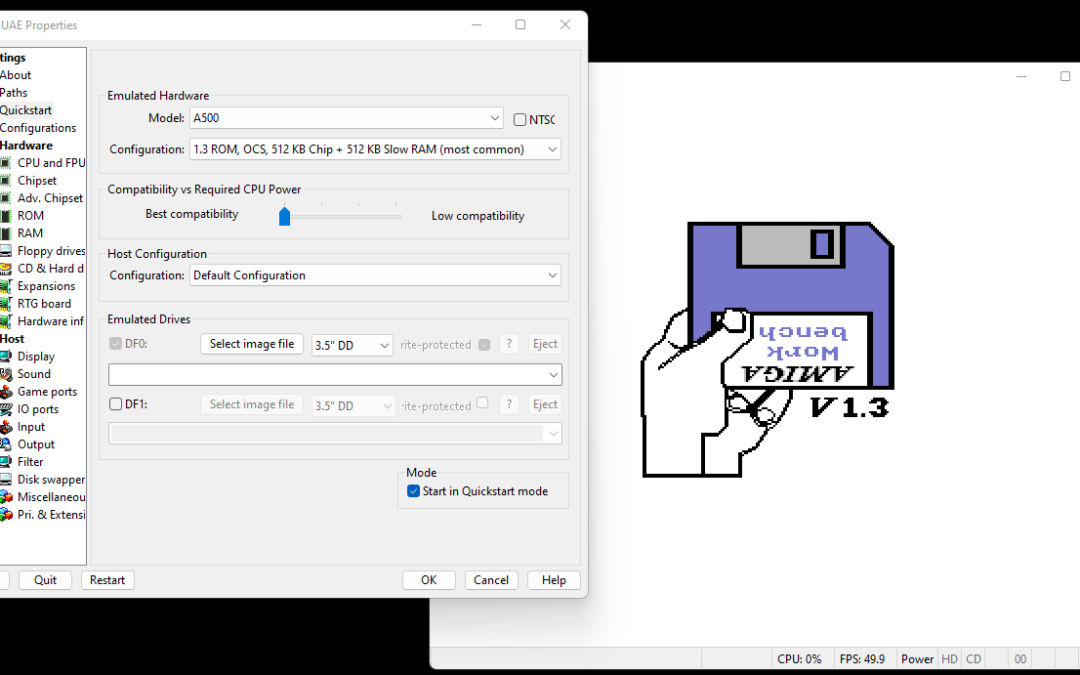In the annals of computer history, the Amiga stands out as a marvel of innovation, a beacon of multimedia capability long before the term became a staple in the tech world. To celebrate and preserve this legacy, enthusiasts and programmers brought forth WinUAE, an emulator that encapsulates the essence of the Amiga experience on modern Windows systems. This article delves into the history of WinUAE, exploring its origins, development, and impact on preserving the Amiga’s heritage.
Origins of WinUAE:
WinUAE, short for Windows Unix Amiga Emulator, has its roots in the early emulation efforts that began in the mid-1990s. The original UAE (Unix Amiga Emulator) project was initiated by Bernd Schmidt in 1995, designed to run on Unix-based systems. It was a time when the Amiga’s commercial viability was waning, but the devotion to its unique capabilities was as strong as ever.
The Birth of WinUAE:
With the increasing popularity of Windows as an operating system, a need arose to port the Unix-based UAE to the Windows environment. This led to the creation of WinUAE, which saw its first release in 1997. The transition to Windows opened up a new world of accessibility, allowing more users to revisit the software and games that had defined the Amiga’s legacy.
Development and Features:
WinUAE’s development has been characterized by a continuous effort to not only emulate the original Amiga hardware but also to expand its capabilities to match the evolving landscape of Windows operating systems. Key features that have been implemented over the years include:
- Support for various Amiga models, from the original Amiga 1000 to the advanced Amiga 4000.
- Emulation of custom Amiga chipsets, allowing for an accurate recreation of graphics and sound that made the Amiga famous.
- Adjustable CPU and memory configurations, enabling users to simulate different levels of Amiga performance.
- Hard disk support, including the ability to boot from Amiga hard disk images.
- Networking capabilities, bringing the Amiga into the modern age of connectivity.
- USB peripheral support, ensuring that modern input devices can be used with the emulator.
Community and Contributions:
The success of WinUAE can be attributed to its open-source nature and the vibrant community that has rallied around it. Users and developers from around the globe have contributed to its codebase, reported bugs, and suggested features that have incrementally shaped WinUAE into the comprehensive emulator it is today.
The Impact of WinUAE:
WinUAE has played a pivotal role in the preservation of Amiga software, providing a platform for historical exploration and educational purposes. It has allowed enthusiasts to relive the games and applications of yesteryear, and has given new life to a system that was once at the cutting edge of technology.
Moreover, it has been instrumental in the Amiga demoscene, providing a consistent and accessible platform for the creation and demonstration of audio-visual artistry, a realm in which the Amiga historically excelled.
Is emulation the future of the Amiga?
WinUAE stands as a testament to the enduring impact of the Amiga and the dedication of its community. It preserves not just the functionality, but also the spirit of innovation that the Amiga represented. As computing continues to evolve, WinUAE ensures that the Amiga’s revolutionary contributions to multimedia and personal computing are not forgotten, but are instead celebrated and enjoyed by generations to come.
Emulation stands as the custodian of the Amiga experience, a digital resurrection allowing contemporary audiences to explore the Amiga’s innovative soul beyond the constraints of original hardware. As vintage machines become rarer and more delicate, emulation not only safeguards the Amiga’s rich library of software and games but also continues its legacy of creativity and ingenuity. Projects like WinUAE are critical in this endeavor, evolving with modern technology to offer enhanced functionality, accessibility, and connectivity that were once the realm of science fiction during the Amiga’s heyday. Through emulation, the Amiga experience is not only preserved; it is transformed into a living, evolving entity that continues to capture the imagination of enthusiasts and newcomers alike, securing its place in the future of computing history.
How to download WinUAE
WinUAE can be downloaded from the official website – https://www.winuae.net/download/
Let’s hear from you
What are your thoughts about WinUAE? Is emulation the future of the Amiga? Let us know in the comments below


